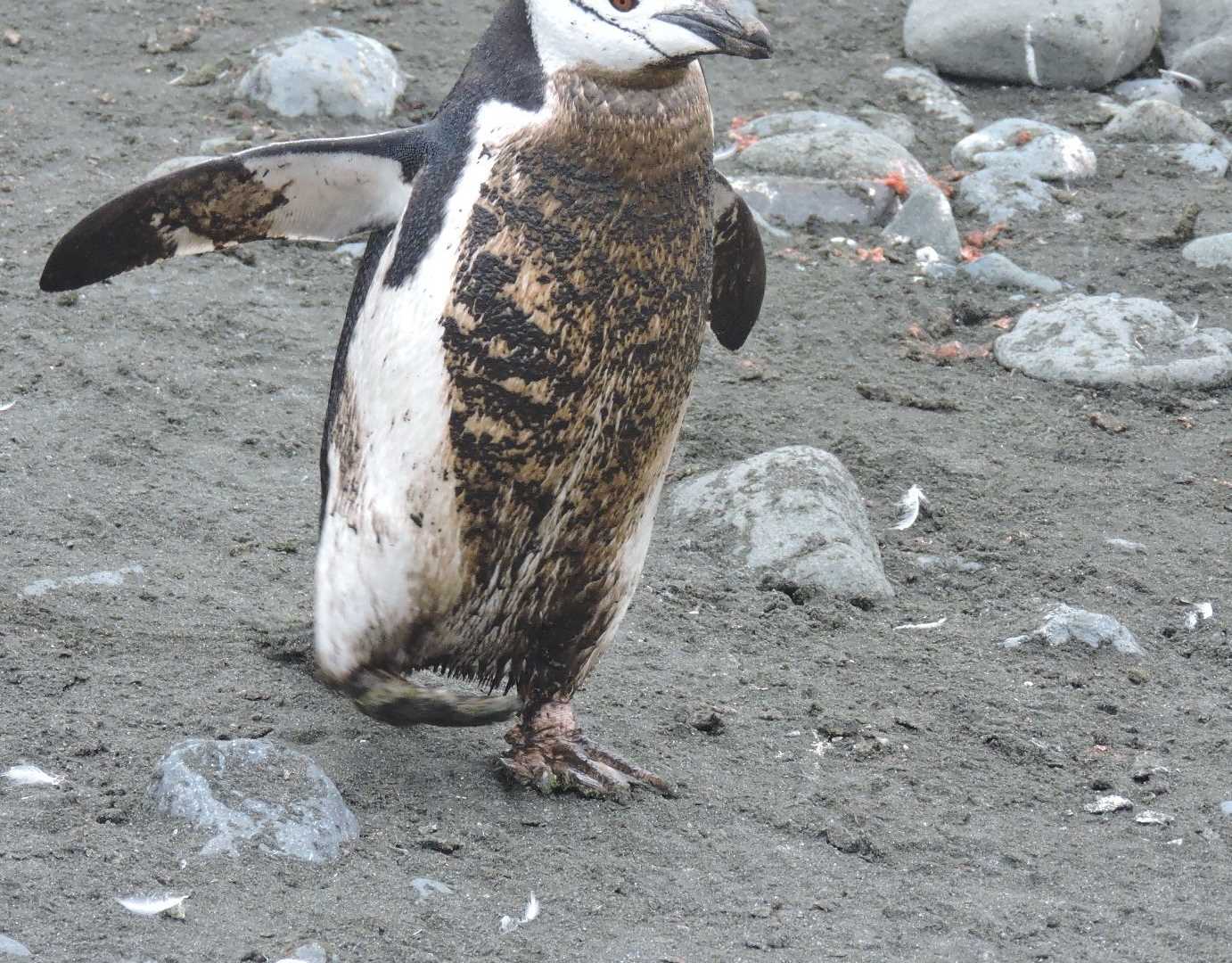National Geographic Orion made great time last night as we continued sailing in relatively calm conditions through the Drake Passage. While there were waves to negotiate, we were experiencing what is called a “following sea,” which made for a swift, comfortable transit. We passed the Antarctic Convergence late yesterday, and we are now well into the Antarctic environment.
We encountered several different species of sea birds on the ship this morning, including Cape petrels, southern fulmars, and Antarctic terns. We even spotted a few chinstrap penguins feeding far out at sea. Fog set in as we we neared the South Shetland Archipelago, but this did not keep our group from catching views of several fin whales.
The fog thickened just as our ship reached the English Strait in the early afternoon, and it became so dense at one point that we could not see our destination island from the anchored ship, just 600 meters off shore. Still, we went ahead with our landing, and within a half hour the fog lifted, allowing for a spectacular afternoon ashore.
We landed at the eastern end of Barrientos Island, part of the Aitcho Archipelago. Barrientos Island is an important breeding site for both gentoo and chinstrap penguins, and this was our first chance to observe, photograph, and interact with these fascinating birds. We did our best to avoid getting too close or disturbing them. However, it would seem their rules for visitation differ (vastly!) from ours as a number of them came right up to us! This experience offered wonderful first-hand learning about animal mannerisms regarding courtship, nesting, feeding of young, molting, and nest maintenance.
We also encountered snowy sheathbills scurrying among the penguin colonies, as well as southern giant petrels and brown skuas that patrolled the island looking for prey.
Most gentoo chicks were now large enough to leave their nests and gather up into “crèches,” or kindergartens, so that parents could go off to collect food. Many juvenal gentoo chicks slept as they waited for their parents’ return. A young elephant seal came ashore on the southern side of the eastern peninsula but didn’t hang around long enough for everyone to see it. One Antarctic fur seal—a bull—was seen inland and made for an interesting spectacle as he rolled around and preened his beautiful fur coat.
The South Shetland Archipelago is the warmest, wettest region of the Antarctic continent. Barrientos Island is not large enough to have developed an ice cap and therefore usually loses what snow it has during the short summer. These conditions have made for some of the richest soils in Antarctica, called an ornithogenic or “bird-produced” soil.
Barrientos Island has developed an amazing coverage of greenery, including green algae in the low coastal areas and thick carpets of moss on the interior slopes, making it one of the greenest spot in continental Antarctica. What we could see is lusher than anything we are likely to find further south.
National Geographic Orion then sailed through the English Strait, with rugged-looking volcanic formations and ice-covered islands flanking both sides of the ship as we drifted toward the peninsula. A short distance away from the South Shetland Islands, we encountered a gigantic tabular berg that had previously broke from the Larson C Ice Shelf.
It was measured at about 14 miles (22 km) by 4 miles (6.5 km) in size. Our expedition leader Peter Wilson measured the height above water as approximately 200 feet (60 m). And don’t forget: About 80 percent of the ice structure is below the surface!
All in all, the sights and experiences we witnessed today no doubt made for a very satisfying first stop in Antarctica.







